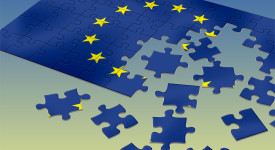Focus on deterrence, modernization and EU relations are NATO’s key priorities that the Alliance will elaborate on at its July summit. Another topic high on the agenda is going to include measures to deal with an increasingly assertive Russia. This will include decisions around the reinforcement, readiness and military mobility in NATO’s eastern flank, thus building off of the Alliance’s 2016 move to boost its military presence in the region.
The Alliance has deployed around 4,000 troops to the Baltic states and Poland to boost its readiness to counter the Russian threat that has intensified since the 2014 annexation of Crimea. “Our deterrence and defense is not only dependent on the forces we have deployed, but it also very much depends on our ability to move forces quickly if needed,” said NATO’s Secretary General Jens Stoltenberg, adding that the July meeting will also focus on conceptualizing stability in border regions — with focus on the south — as well as burden-sharing.
With the worsening of the relations between the two sides, the head of NATO said that he expected his organization to reiterate its “dual-track” approach towards Moscow, “about deterrence and defense combined with political dialogue”, adding that “even if we don’t believe in a better relationship with Russia in the near future, we need to manage our relationship with Russia.” The Alliance has accused Moscow of using “hybrid warfare” techniques such as propaganda, subversion, and cyber-attacks to undermine the West without triggering a full NATO military response. NATO’s Article 5 requires that in case one member state is attacked, all member states need to come to the rescue.







